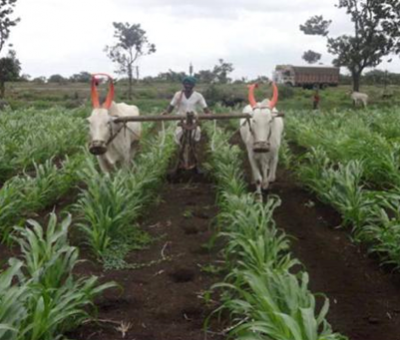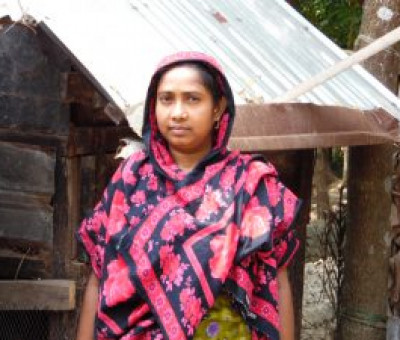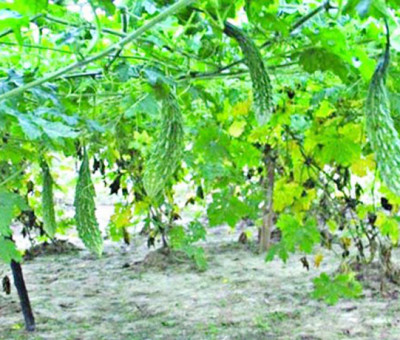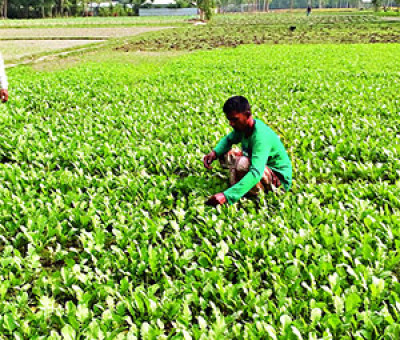
03-10-2019
Wider spacing in crops helps tide over water scarcity
The challenge in increasing crop productivity is more especially in dry areas, where it is a tough task for both farmers and scientists alike. While digging ponds to store rainwater might be advised, the impracticality of doing it by small farmers with less than three acres is still an issue.
For such small farmers the krishi vigyan kendra in Bijapur, Karnataka, has developed a method to overcome water scarcity. It is a simple method where farmers are advised to plant their crops with a wider spacing between them.
Bijapur is situated in northern Karnataka and is frequently hit by droughts. This area receives an annual rainfall of 593.3 mm which is insufficient for most of the dry-land crops.
Narrow spacing
“In general, farmers adopt narrow row spacing for planting the crops. There is a standard procedure with farmers adopting their own measurements according to their choice. By doing so, there tends to be a stiff competition between the plants for moisture as the plant grows. The moisture requirement will be more especially during the peak flowering and grain filling phases, but there will be less soil moisture leftover, thereby affecting the yield of the dry-land crops,” explains Dr. S.S.Nooli, scientist at the Kendra.
In collaboration with the All India Coordinated Project for Dry Land Agriculture and Regional Agricultural Research Station, 34 awareness programmes were conducted for farmers from 80 villages on the need for adopting this method.
The Kendra also conducted 108 frontline demonstrations for 270 farmers and suggested they plant the high yielding hybrids of pearl millet (bajra/cumbu) and sunflower provided by the kendra with wider row spacing.
Pearl millet
Farmers in Bijapur region started planting their crops with wider row spacing of 120 cm (between rows) x 5-10 cm (between plants) and were able to get 20-25 per cent better yield. Cases of infestations were also noticed to be quite low.
“We did a systematic study on pearl millet and sunflower since these two crops are quite common in this region. An additional net profit of Rs.3,910 per hectare was achieved in pearl millet and Rs.8,580 a hectare in sunflower over the conventional method,” says another scientist Dr. S.Y. Wali.
This technology is presently being adopted in 15,500 hectares in Bijapur, Bagalkot and Koppal districts of Karnataka.
Production
Crop productivity is largely determined by the amount of soil moisture. Crops cultivated with wider row spacing coupled with repeated deep inter cultivation helps to create dust mulch on the soil surface.
This dust mulch acts as a barrier from higher evaporation losses, which ultimately leads to better moisture availability and hence better yield. Mr. V.B. Kinagi belongs to Muttagi village, Bagewadi taluk, Bijapur district. He grows onion, bajra, lime, maize and cotton in his seven acres.
“My region is very low in rainfall and I have been finding it difficult to maintain the needed moisture level in the soil for my crop. Digging a new well or sinking a bore well would cost me big money. It was then that the Kendra officials advised me to adopt a little wider spacing for my crops unlike what I was doing all these years. Initially I thought it would make no difference. But after some months I am able to see better crop growth and the moisture retention in my soil,” he says.
Cannot be generalised
Farmers should note that this project on pearl millet and sunflower was tested only in Bijapur region, Karnataka. It cannot be generalised for other states, according to the research team
আপনি কি সন্তুষ্ট ?
Leave a Comment
Search Keyword
Tags
Most Recent Story
-
Success Story of Eanur
09-10-2019 -
পঞ্চগড়ে সবজি চাষে কৃষক মোবারকের সাফল্য
03-10-2019










0 Comment